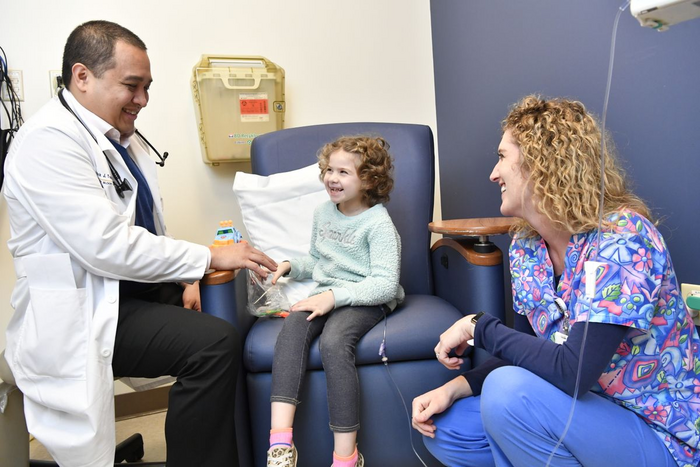Research from a West Virginia University family systems expert shows children who don’t live with both married biological or adoptive parents may have more difficulty accessing health care.

Credit: WVU Photo
Research from a West Virginia University family systems expert shows children who don’t live with both married biological or adoptive parents may have more difficulty accessing health care.
While 73% of children lived with both biological parents in 1960, that number today has dropped to 60%, Jonathon Beckmeyer, assistant professor at the WVU College of Applied Human Sciences, said.
Increasingly, children may live in households headed by a diverse group of caregivers, such as grandparents, other relatives, a single mom or dad, or a biological parent and stepparent.
Using data from the 2019 National Survey of Children’s Health, Beckmeyer assessed health care for kids from various family structures, considering whether a child had been to a doctor in the past year, was able to speak with a doctor alone, had a regular location for preventive and sick care and a regular doctor they saw there, and whether doctors “made the families feel like partners in the child’s care.”
Survey responses provided by caregivers of more than 12,000 children aged 12 to 17 revealed that for each of those categories, married biological or adoptive parents outperformed all other types of families in enabling children’s access to health care. Beckmeyer’s findings were published in the Journal of Family Nursing.
Children growing up in homes headed by a relative other than a parent or grandparent had the least favorable outcomes, followed by children raised by single fathers.
For Beckmeyer, that doesn’t indicate poor caregiving by relatives and dads. Instead, he said it reflects an overarching trend: Children from the least common kinds of families have the lowest access to health care.
“Single-father families are pretty uncommon for a variety of reasons including the expectations we have for men and women around child care,” Beckmeyer said. “In this data set, we’ve got 1,802 single mothers and 556 single fathers. It’s almost three to one, and that’s representative of U.S. households.
“If your family structure is more unique, you’re going to have difficulty explaining it to others. Establishing the roles, boundaries and routines within the family might be more challenging. Providers may not quite know how to best serve that.
“But recognizing that some family structures have more challenges is not to say some family structures are better or we should have fewer family structures. Our goal is not to suggest that families should have any specific form, but to get people to see that helping a family flourish will look different for different families.”
Challenges can come from the family. For instance, recently divorced parents may lack a system for sharing health care responsibilities or medical information with each other.
Challenges can also emerge on the provider side, as when a doctor or nurse is unsure about which of a child’s multiple caregivers can legally access health records.
Beckmeyer believes single fathers are particularly in need of more inclusive messaging from support agencies.
“Many programs aren’t marketed to fathers, or fathers may not feel comfortable going to them,” he said. “WIC – Women, Infants and Children – is interesting because it’s three things in one. One of those is women’s health, but the other parts are infant and child health and family nutrition.
“A single father’s children could absolutely be eligible for the infant and children part of those programs. But those fathers may think, ‘Well, it says ‘women,’ so am I going to be welcome here?’”
While Beckmeyer’s research illuminates those hindrances, it also demonstrates that initiatives like WIC, the Supplemental Nutrition Assistance Program and the Children’s Health Improvement Program have resulted in recent improvements to health care access for children from non-nuclear families.
In the next phase of the research, Beckmeyer will probe the specific factors driving each kind of family’s challenges when it comes to accessing pediatric health care. At the same time, he’ll be searching for funding for his dream project — a statewide survey that explores these issues, with data drawn not from caregivers’ responses, but from the children themselves.
Journal
Journal of Family Nursing
DOI
10.1177/10748407221124133
Article Title
Family Structure Diversity and Youth Health Care Access and Interactions With Health Care Providers
Article Publication Date
29-Sep-2022




